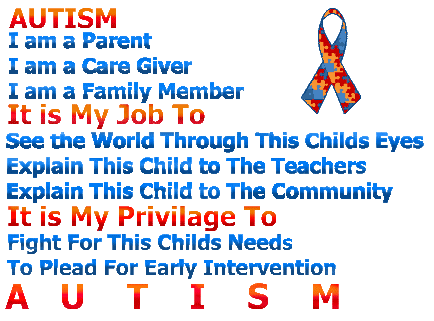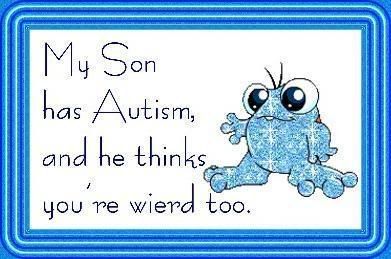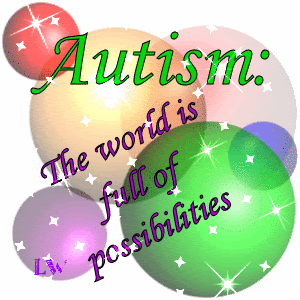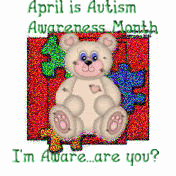Well, I haven't been blogging much..because alot of crap has been going on..the doctors "THINK" my husband has had a heart attack in the past?!?!? He went 2 weeks ago for a stress test and echo of his heart...and well they called us a week later and said that we needed to come in and discuss his test results...(okay..we all know that when they want you to come in for results..it IS NOT good)..I had the same tests done a few months ago and they called me with my results.
We went to the doctor on Tuesday and he said that Bobby's test shows changes???!!! The doctor said that since my husband has diabetes that he can have a heart attack and not know it...So now he goes for more testing next week, on Tuesday again..depending on what this test shows he will have to have a cardiac cath done. He says he is not worried..but he now has stopped sleeping....needless to say everyone now in this house is stressed...beyond being stressed....Just needed to vent some..not sure how much I will be blogging in the near future....keep us in your prayers please......
Thursday, January 31, 2008
The lastest about my life...
Posted by
Mom of 3 boys
at
1:57 PM
3
comments
![]()
Saturday, January 26, 2008
Sorry..but I am worried....
Okay, as everyone can tell by my 2 previous posts/videos...I am worried about this election year...and where the world is going....okay so I did not slam any "Reps" yet...but I probably will before it is over...And I really don't care if the next president is "dem" or "rep"..as long as the best interest of the country is the main concern and yes..I want a president that will help with the health care issue and autism issues as well as the war and economy....here are my words of advice for every voter...don't vote based on "dem" or "rep", race or gender, or religion....vote for the person...(woman or man)...that CAN DO and WILL DO...the best job....well that is my rant for the night....
Posted by
Mom of 3 boys
at
10:08 PM
3
comments
![]()
DO YOU WANT YOUR CHILDREN'S FUTURE IN THE HANDS OF THIS
USE MUST STOP/PAUSE MY MUSIC TO WATCH/LISTEN TO THIS.....
For all the Obama supporters:
This man can't even honor the countrys National Anthem, yet he wants to be President?????? He is a Muslim, he is racist, and he is no American!
Posted by
Mom of 3 boys
at
9:44 PM
0
comments
![]()
Please set aside religious and race issues..put our kids first!!!!
YOU MUST STOP THE MUSIC FROM PLAYING TO HEAR THE MESSAGE....
Remember this when you are voting...who has your child's interest at heart when it comes to AUTISM that is stealing them away from us? Please, set aside the religious and race cards and put our kids first, for their sake!!
TIME IS TICKING ON THE AUTISM CLOCK!!!!
PLEASE WATCH AND LISTEN TO THE ENTIRE SPEECH.....MAKE THE RIGHT CHOICE FOR THE CHILDRENS SAKE!!!
Posted by
Mom of 3 boys
at
9:16 PM
0
comments
![]()
Wednesday, January 23, 2008
Monday, January 21, 2008
My lazy dog.....
 Okay, my dog go into our bed and messed the blankets up..basically he made himself comfortable...and as you can tell he is covered up...NO..we did not cover him up..he did this himself..somehow.
Okay, my dog go into our bed and messed the blankets up..basically he made himself comfortable...and as you can tell he is covered up...NO..we did not cover him up..he did this himself..somehow. He never moved for any of these pictures..I took about 15 of them.
He never moved for any of these pictures..I took about 15 of them. Here is my hubby trying to get him to move...he was bugging him, so see what he would do...all he did was stretch out more...he is such a lazy dog...
Here is my hubby trying to get him to move...he was bugging him, so see what he would do...all he did was stretch out more...he is such a lazy dog...
He actually turned away from the camera in this picture. He just rolled over and closed his eyes again.....
He just rolled over and closed his eyes again..... Now this is one lazy dog..but he is cute as a button...but finally had to kick him our bed so we could go to sleep....needless to say...he got mad and cried at the door....poor bandit....
Now this is one lazy dog..but he is cute as a button...but finally had to kick him our bed so we could go to sleep....needless to say...he got mad and cried at the door....poor bandit....
Posted by
Mom of 3 boys
at
7:42 PM
6
comments
![]()
More about autism....
Chromosomal Abnormalities Play Substantial Role In Autism
ScienceDaily (Jan. 17, 2008) — Genome-wide scans of families affected by autism spectrum disorder (ASD) have revealed new evidence that previously unknown chromosomal abnormalities have a substantial role in the prevalent developmental disorder, according to a new report. Structural variants in the chromosomes were found to influence ASD with sufficiently high frequency to suggest that genomic analyses be considered in routine clinical workup, according to the researchers.
"Historical studies in identical twins and their families have provided strong evidence for a genetic basis of autism," said Stephen Scherer of The Hospital for Sick Children and the University of Toronto. "Last year, with the Autism Genome Project Consortium, we did an initial study to look at the rate of chromosomal changes in autism. Now, we've really pinned down those numbers."
Autism is a complex developmental disorder found in about one in every 165 children, making it one of the most common forms of developmental disability of childhood. Individuals with ASD have deficits in social interaction and communication and show a preference for repetitive, stereotyped activities. Structural changes, including gains and losses of genes as well as chromosomal translocations (in which a chromosomal segment ends up in the wrong place) or inversions (in which a portion of the genome is oriented backwards) have been previously identified in some individuals with ASD, but their causal role hasn't been clear.
In the new study, the researchers examined structural abnormalities in 427 unrelated ASD cases using both microarray analysis and karyotyping. Microarrays can detect "unbalanced" genetic changes that alter the number of copies of a particular gene. Karyotyping, in which chromosomes are viewed under the microscope, can identify "balanced" translocations or inversions that might otherwise be missed by microarrays.
While most chromosomal abnormalities were inherited, the researchers found that seven percent of children with autism carry structural changes in the genome that are not found in their parents. The rate of such de novo changes in the general population is typically less than one percent, Scherer said.
The researchers detected 13 regions of the genome with overlapping or recurrent chromosomal changes in unrelated people with autism, suggesting that genes located at these sites may cause or add to the complexity of the condition. The most prevalent change, occurring in one percent of ASD cases, was found on chromosome 16, they reported. The altered portion of chromosome 16 has structural characteristics that make it more prone to errors, Scherer noted.
In a subset of ASD cases, the researchers found abnormalities in several genes known to be involved in neuron function. They also identified at least two sites that have previously been linked to mental retardation.
"Our understanding of the full etiologic role of structural variation in ASD will require genomic and phenotypic analyses of more cases (and their families) and population controls," the researchers concluded. As a first step toward achieving the desired numbers, the researchers have established a new Autism Chromosome Rearrangement Database, which allows integration of their new data and all other molecular information with the wealth of karyotypic data gathered over the years.
In light of the new findings, Scherer's team also calls for new testing in the clinic.
"From our current data it is already apparent that for a proportion of individuals, it will be possible to describe their ASD based on the underlying structural characteristics of their genome," they wrote.
"If we found certain changes, we could then watch those children closer," Scherer added, noting the critical importance of early diagnosis for autism.
This research was published online Jan. 17th in the American Journal of Human Genetics, a publication of Cell Press.
Adapted from materials provided by Cell Press, via EurekAlert!, a service of AAAS.
Cell Press (2008, January 17). Chromosomal Abnormalities Play Substantial Role In Autism. ScienceDaily. Retrieved January 20, 2008, from http://www.sciencedaily.com /releases/2008/01/080117121518.htm
Posted by
Mom of 3 boys
at
8:15 AM
2
comments
![]()
Friday, January 18, 2008
TJ's Birthday!!!
Well I am finally posting some pics of the birthday boy and my "student of the month"...he is one awesome kid......Hopefully I got the slide show to work...I had some trouble with it....
Posted by
Mom of 3 boys
at
9:03 PM
0
comments
![]()
LIFE IS CRAZY !!!!!!!!!
OKAY, I HAVE TO VENT!!!******!!!!!!!
I WAS TOLD I COULD NOT CONTINUE IN THE NURSING PROGRAM.......WHEN I WENT TO GET MY PHYSICAL,DRUG SCREENING AND FINGER PRINTING DONE, THEY ASKED FOR A LIST OF MY MEDICATIONS..OK, SO NO BIG DEAL.
WELL, TO MY SURPRISE THEY DO NOT WANT ANY STUDENTS THAT TAKE ANTIDEPRESSANTS...((((*****WHAT THE F***))))...HOW CRAZY IS THAT??????????? OVER HAVE THE PEOPLE IN THE US TAKES SOME TYPE OF ANTIDEPRESSANT......SO I AM DONE..I QUIT...I BELIEVE THAT IT IS NOT MEANT FOR ME TO BE A NURSE..THIS WAS THE LAST STRAW.....THEY SAID THAT I COULD POSSIBLY OVER-RIDE IT IF I GOT A STATEMENT FROM THE DOCTOR THAT PRESCRIBED IT FOR ME.
NOW THAT SHOULD NOT BE A BIG DEAL...WELL IT IS...THE DOC THAT PUT ME ON THE MEDS IS IN OHIO AND WILL NOT WRITE A STATEMENT FOR ME SINCE I AM NO LONGER HER PATIENT. AND MY DOC HERE WILL NOT WRITE IS SINCE HE DID NOT PRESCRIBE IT TO ME...OKAY SO NOW WHAT???!!!!???? SORRY TO VENT..BUT THIS IS TOO FREAKING CRAZY EVEN FOR ME......LOL
Posted by
Mom of 3 boys
at
11:47 AM
10
comments
![]()
Wednesday, January 16, 2008
What a week.....again...
I haven't posted any pics from TJ's party yet...things have been kinda crazy lately....so once my life calms down again I will post some pics....The birthday party was a success. He had a blast. Things with college aren't working out as planned, so I am not sure how things are going to turn out...Will post more later.
Posted by
Mom of 3 boys
at
4:21 PM
1 comments
![]()
Friday, January 11, 2008
 Me and my hubby at Chrsitmas!!!! (2007)
Me and my hubby at Chrsitmas!!!! (2007) The big KISS on our wedding day...June 10, 2006
The big KISS on our wedding day...June 10, 2006 We are almost there....
We are almost there.... The Wedding Party!!!!
The Wedding Party!!!!
I just wanted to share my loved ones with my blog buddies....
Posted by
Mom of 3 boys
at
5:10 PM
3
comments
![]()
Labels: My Family
Autism News
Moving 2 Steps Closer To Understanding The Genetic Underpinnings Of Autism
Main Category: Autism
Also Included In: Genetics
Article Date: 11 Jan 2008 - 4:00 PST
email icon email to a friend printer icon printer friendly write icon view / write opinions rate icon rate article icon newsletters
Visitor Ratings:
Healthcare Professional:
not yet rated
General Public: 5 stars
The latest issue of the American Journal of Human Genetics (AJHG), describes what might be a corner piece of the autism puzzle - the identification and subsequent validation of a gene linked to the development of autism by three separate groups of scientists. An accompanying commentary by Dr. Dietrich Stephan, Director of the Neurogenomics Division at the Translational Genomics Research Institute's (TGen), further explains the findings.
Autism is a perplexing disease whose cause remains unexplained. It has long been suggested that environmental factors, linked with genetics, play a role in causing the disorder. As recently as last week, researchers in California published a study that found no proof linking autism with a mercury-based preservative found in childhood vaccines. While there are no clear-cut answers, researchers are one step closer to understanding autism's genetic cause.
In March 2006, Dr. Stephan, Director of TGen's Neurogenomics Division, led a team of researchers at TGen and collaborators at the Clinic for Special Children (CSC) in Strasburg, PA, that identified a gene called CNTNAP2. When mutated, this gene indicated a predisposition to autism in a specific population of Old Order Amish children from Pennsylvania.
One of the most important principles in science is the ability to replicate results. Now, three groups of researchers from Yale University, the University of California, Los Angeles, and the Johns Hopkins University, have replicated the initial finding in the general population, unequivocally implicating this gene as causing the newly defined Type 1 autism. All three studies plus Dr. Stephan's commentary are published in the January edition of AJHG.
According to Dr. Erik Puffenberger, Laboratory Director of the Clinic for Special Children, "Our previous finding of association between loss of CNTNAP2 function and autistic behavior has been validated in the general population. This is a very exciting step for autism research. It also highlights the enormous potential of the 'small science' approach. Our initial work used only four affected Amish children. Careful study of these four patients uncovered the association between CNTNAP2 and autistic behaviors. From that small beginning, CNTNAP2 has now been implicated as a significant risk factor for autism."
Autism spectrum disorder (ASD) is a broadly used term for a set of developmental disorders that emerges in infants and young children. ASD impairs a child's intuitive thought, language and social development to varying degrees. Most individuals diagnosed with ASD require lifelong supervision and care; the most severely affected are unable to speak. ASD is the fastest growing developmental disability in the U.S. Two decades ago, roughly one child in 10,000 was diagnosed with ASD; it now affects one in 150 births.
"The field of genetics is replete with examples where researchers are unable to reproduce results. Here we have independent confirmation in multiple groups using large samples sizes," said Dr. Stephan. "Now that the results of the initial CNTNAP2 gene finding have been replicated, it strongly supports the notion that the 'broken version' of CNTNAP2 is recognized as a cause of autism in the general population."
In collaboration with the Phoenix-based Southwest Autism Research & Resource Center (SARRC), a nonprofit community-based organization dedicated to research, education and resources for individuals with ASDs and their families, TGen will apply these research findings to children in Arizona who have been diagnosed with ASD.
"The heterogeneity of the disorder has frustrated our past efforts in the search for causes of autism," said Dr. Raun Melmed, medical director and co-founder of SARRC. "This exciting discovery will further our capacity to individualize approaches to the diagnosis and treatment of autism."
The next step, noted Dr. Stephan in the commentary, is to develop a diagnostic to test for the CNTNAP2 mutation. If physicians could implement behavioral interventions early enough, children with autism may have a better chance of developing normally.
The initial discovery of CNTNAP2 in autism was published in the March 30, 2006, issue of the New England Journal of Medicine.
About TGen
The Translational Genomics Research Institute (TGen) is a non-profit 501(c)(3) organization focused on developing earlier diagnostics and smarter treatments. Translational genomics research is a relatively new field employing innovative advances arising from the Human Genome Project and applying them to the development of diagnostics, prognostics and therapies for cancer, neurological disorders, diabetes and other complex diseases. TGen's research is based on personalized medicine. The institute plans to accomplish its goals through robust and disease-focused research.
About the Clinic For Special Children
The Clinic for Special Children was established in 1989 to provide early diagnosis, affordable laboratory services, and comprehensive medical and nutritional care for Old Order Amish and Mennonite children that suffer from genetic disorders. The clinic mission encompasses four aims: 1) Make high-quality medical care for special children accessible, affordable, and culturally effective; 2) Develop comprehensive methods of newborn screening and follow-up care for genetic disorders prevalent among the Plain people; 3) Develop practical clinical applications for modern molecular genetic technologies; and 4) Elucidate disease mechanisms for the purpose of improving patient treatment and outcome. Clinical work at the CSC is funded by private donations from individuals, foundation contributions, and an endowment fund established for this purpose. Many collaborating scientists and laboratories donate specialized services. The CSC receives no money from state or federal sources and is a private non-profit 501(c)(3) charitable institution.
About SARRC
Founded in 1997, the Southwest Autism Research & Resource Center (SARRC) is a nonprofit, community-based organization dedicated to autism research, education and resources for children and young adults with autism spectrum disorders (ASDs) and their families. SARRC undertakes self-directed and collaborative research projects, serves as a satellite site for national and international projects, and provides up-to-date information, training and assistance to families and professionals about ASDs. For more information about SARRC, visit http://www.autismcenter.org/.
Source: Amy Erickson
The Translational Genomics Research Institute http://www.medicalnewstoday.com/articles/93745.php
Sponsored Links
Posted by
Mom of 3 boys
at
5:08 PM
4
comments
![]()
Thursday, January 10, 2008
CONGRATUALTIONS TO TJ!!!!!!

Get More at COMMENTYOU.com
MY SON MADE STUDENT OF THE MONTH AT THIS SCHOOL!!!!!!!
YEAH!!!!!!!!!
I AM SO PROUD OF YOU TJ!!!!!!
Posted by
Mom of 3 boys
at
12:53 PM
5
comments
![]()
Tuesday, January 8, 2008
christmas pics and other pics...
Well, I have been so busy and tired from starting back to college that I haven't been blogging. I am so sore...the student parking is 1.1 miles from the school..yes we have to walk it...yes I do need the exercise...but I am out of shape. The school says that at least the parking is free....Update on the new dog..we found her a new home....I miss her in a way, but it was just to much to handle with starting back to nursing school.
Posted by
Mom of 3 boys
at
6:28 PM
3
comments
![]()
Sunday, January 6, 2008
Autism and dealing with the public....







As you tell I am a little pissed at society, so until I calm down I will let the pictures do my talking...
Posted by
Mom of 3 boys
at
10:10 AM
5
comments
![]()












